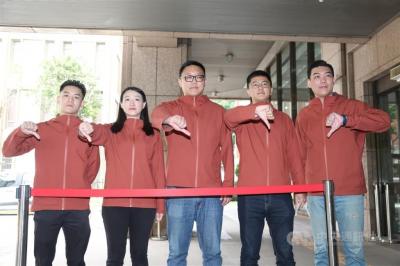Taiwanese researchers, working in collaboration with an international team, have identified eight genes that could predict the incidence of Type 2 diabetes.
Through meta-analysis of genome-wide association studies — an approach that scans complete sets of DNA or genomes in different individuals for genetic variations associated with a particular disease — of more than 50,000 people and three stages of case selection, the Asia Genetic Epidemiology Network — a consortium of researchers from Taiwan, South Korea, Japan, Singapore, China and the US — was able to identify casual genes for Type 2 diabetes for East Asians, the researchers said.
The Taiwanese research team was led by professors Chen Yuan-tsong (陳垣崇) and Wu Jer-yuarn (鄔哲源), from Academia Sinica’s Institute of Biomedical Sciences, professor Chuang Lee-ming (莊立民) of National Taiwan University Hospital and professor Tsai Fuu-jen (蔡輔仁) of China Medical University Hospital.
Wu said the consortium was formed to find gene expressions for the disease that are unique to Asians, because most studies of Type 2 diabetes have focused on gene studies in Caucasians.
Wu said that the team contributed to the study by offering an analysis of the genetic data of 2,000 Taiwanese.
“There were about 360 million people with diabetes worldwide last year and it is estimated that number will rise to about 500 million in 2030,” Chuang said. “The prevalence of Taiwanese with diabetes has increased from about 4 percent in 1997 to about 6.5 percent over the past decade.”
Chuang said Type 1 diabetes, which often occurs in children, has been identified as being mainly caused by certain genes, whereas Type 2 diabetes, which more often occurs in adults, is affected by genes and environmental factors.
Wu said the eight genes identified by the research offer clues for the establishment of a model that could predict a higher occurrence rate of Type 2 diabetes, but added that more research has to be done to prove the actual casual relations between the genes and the disease.
Additional reporting by CNA

Taiwan is stepping up plans to create self-sufficient supply chains for combat drones and increase foreign orders from the US to counter China’s numerical superiority, a defense official said on Saturday. Commenting on condition of anonymity, the official said the nation’s armed forces are in agreement with US Admiral Samuel Paparo’s assessment that Taiwan’s military must be prepared to turn the nation’s waters into a “hellscape” for the Chinese People’s Liberation Army (PLA). Paparo, the commander of the US Indo-Pacific Command, reiterated the concept during a Congressional hearing in Washington on Wednesday. He first coined the term in a security conference last

Prosecutors today declined to say who was questioned regarding alleged forgery on petitions to recall Democratic Progressive Party (DPP) legislators, after Chinese-language media earlier reported that members of the Chinese Nationalist Party (KMT) Youth League were brought in for questioning. The Ministry of Justice Investigation Bureau confirmed that two people had been questioned, but did not disclose any further information about the ongoing investigation. KMT Youth League members Lee Hsiao-liang (李孝亮) and Liu Szu-yin (劉思吟) — who are leading the effort to recall DPP caucus chief executive Rosalia Wu (吳思瑤) and Legislator Wu Pei-yi (吳沛憶) — both posted on Facebook saying: “I

Sung Chien-liang (宋建樑), who led efforts to recall Democratic Progressive Party (DPP) Legislator Lee Kun-cheng (李坤城), was released on bail of NT$80,000 today amid outcry over his decision to wear a Nazi armband to questioning the night before. Sung arrived at the New Taipei District Prosecutors’ Office for questioning in a recall petition forgery case last night wearing a red armband bearing a swastika, carrying a copy of Adolf Hitler’s Mein Kampf and giving a Nazi salute. Sung left the building at 1:15am without the armband and covering the book with his coat. Lee said today that this is a serious

A mountain blaze that broke out yesterday morning in Yangmingshan National Park was put out after five hours, following multi agency efforts involving dozens of fire trucks and helicopter water drops. The fire might have been sparked by an air quality sensor operated by the National Center for High-Performance Computing, one of the national-level laboratories under the National Applied Research Laboratories, Yangmingshan National Park Headquarters said. The Taipei City Fire Department said the fire, which broke out at about 11am yesterday near the mountainous Xiaoyoukeng (小油坑) Recreation Area was extinguished at 4:32pm. It had initially dispatched 72 personnel in four command vehicles, 16